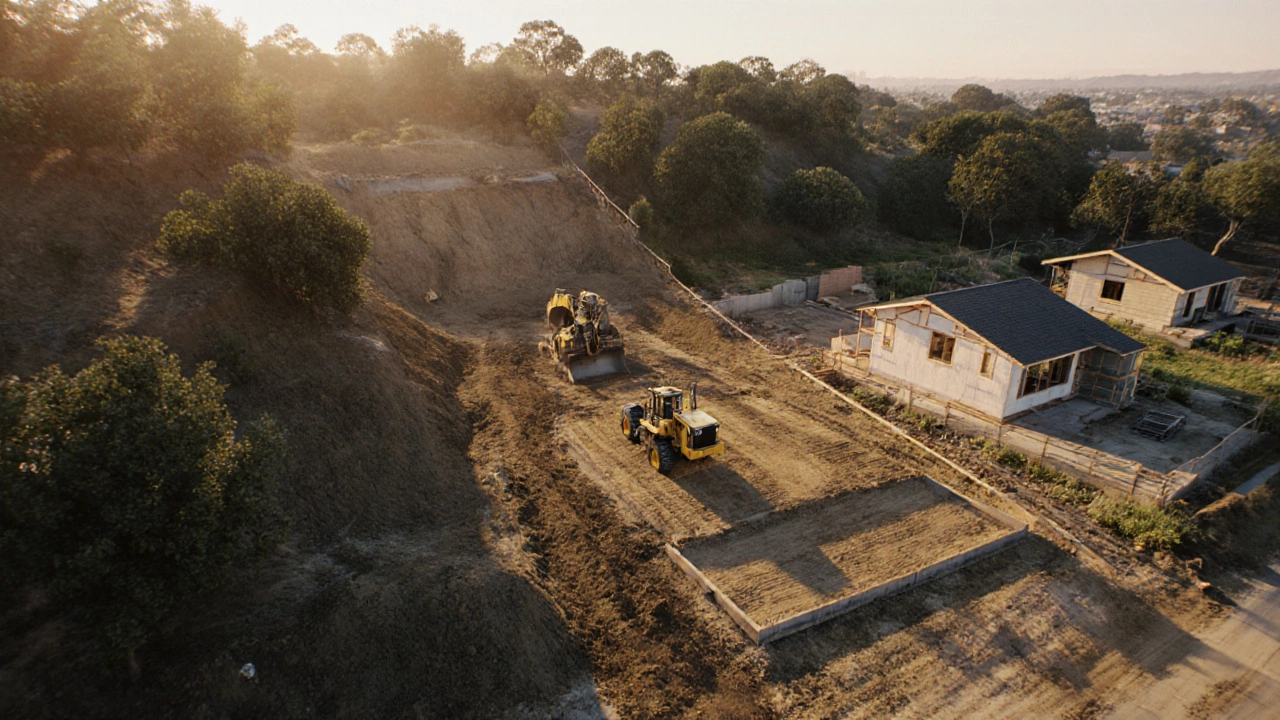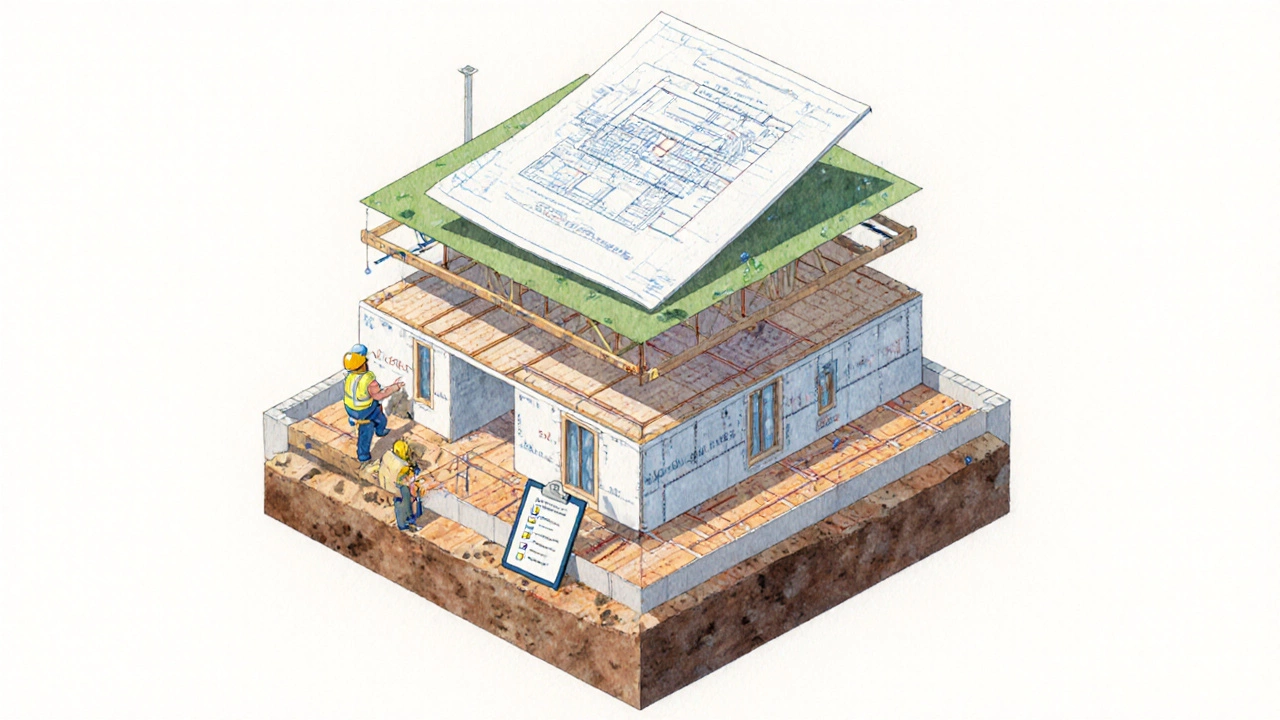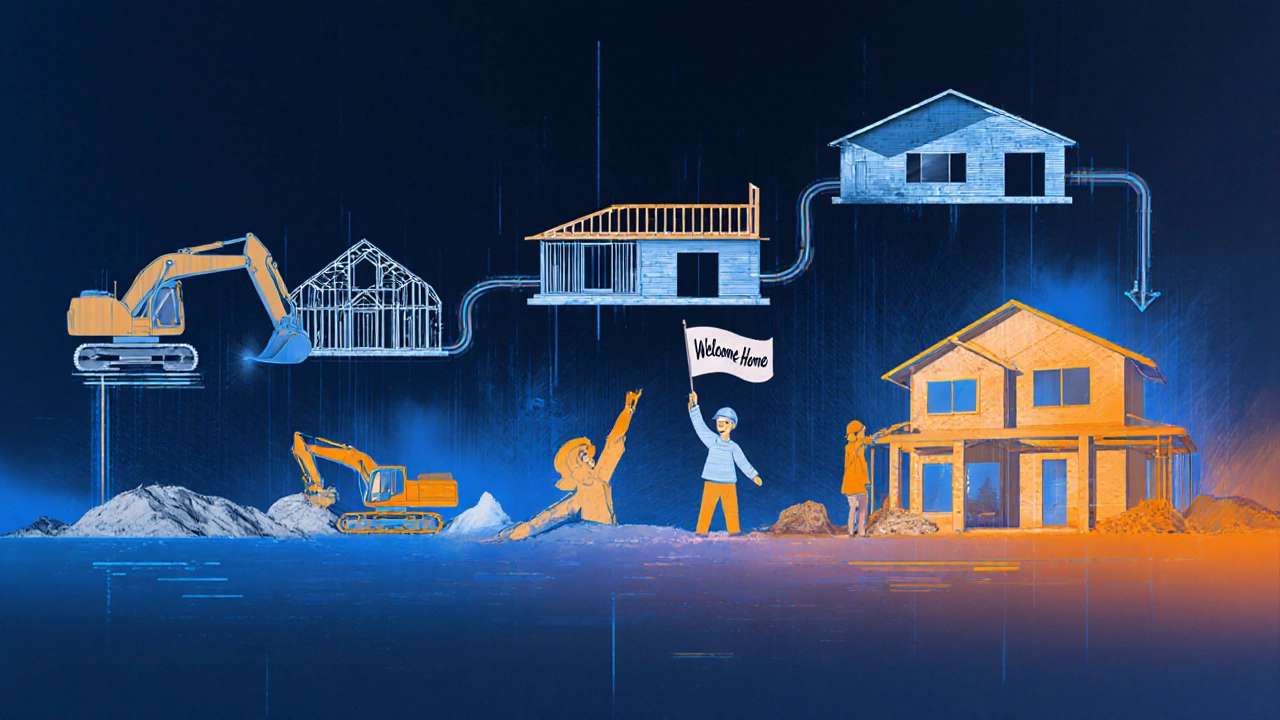California 3,000‑sq‑ft Home Construction Cost Guide (2025)

California Home Construction Cost Calculator
Estimate Your Build Cost
Estimated Cost Breakdown
Total Estimated Cost:
Cost Breakdown
- Land & Site Prep:
- Foundation & Structural:
- Exterior Envelope:
- Interior Finishes:
- Mechanical Systems:
- Labor:
- Permits & Fees:
- Design & Soft Costs:
- Contingency (10%):
Note: This estimate is based on current California market data for 2025. Actual costs may vary based on specific design choices, local regulations, and market conditions.
Building a 3,000sqft house in California is a major financial decision, and the numbers can feel overwhelming. In 2025 the average price tag ranges from $550,000 to well over $1 million, depending on location, materials, and design choices. This guide breaks down where those dollars go, shows how costs shift across the state, and gives you a practical budgeting checklist so you can plan with confidence.
What Drives the Final Price?
Understanding the cost structure helps you spot where you can save and where you should spend. Below are the five biggest buckets that make up the total spend for a 3,000sqft new build.
- Land acquisition and site prep - Buying the lot, clearing trees, grading, and installing utilities. In high‑density markets like the Bay Area this can be $150‑$300 per sqft, while rural parcels drop to $30‑$70 per sqft.
- Construction labor - The biggest variable after land. California’s prevailing wage laws and union rates push labor costs to about $120‑$180 per hour for skilled trades. For a typical 3,000sqft home, labor alone consumes 30‑40% of the budget.
- Material costs - Framing, roofing, windows, finishes, and major systems. Prices have been volatile; 2025 sees lumber around $650 per 1,000 board feet, steel at $1,200 per ton, and premium insulated windows at $550 each.
- Permits and fees - Building permits, impact fees, school fees, and fire‑safety approvals. In California each county sets its own schedule; for a 3,000sqft home you’ll pay roughly $5,000‑$15,000 total.
- Design and soft costs - Architectural drawings, engineering, project management, and insurance. Expect 10‑15% of the total budget here.
Regional Cost Multipliers in California
California isn’t a single market. Geography, labor pools, and local regulations create distinct cost zones. Below is a quick snapshot of average construction cost per square foot for a mid‑range home in 2025.
| Region | Avg Cost per SqFt | Estimated Total for 3,000sqft |
|---|---|---|
| San Francisco Bay Area | $400‑$550 | $1,200,000‑$1,650,000 |
| Los Angeles Metro | $350‑$470 | $1,050,000‑$1,410,000 |
| San Diego Coastal | $320‑$440 | $960,000‑$1,320,000 |
| Central Valley (Fresno, Bakersfield) | $210‑$280 | $630,000‑$840,000 |
| Inland Empire & Inland South (Riverside, San Bernardino) | $230‑$300 | $690,000‑$900,000 |
| North Coast & Sierra (Redding, Chico) | $190‑$260 | $570,000‑$780,000 |
These figures assume a standard two‑story design with mid‑grade finishes. Luxury upgrades (custom cabinetry, high‑end stone countertops, smart home systems) can add $50‑$150 per sqft.
Detailed Cost Breakdown for a Typical 3,000sqft Home
Let’s walk through a sample budget for a mid‑range home in the Central Valley, often considered a sweet spot for cost‑conscious builders.
- Land & Site Prep: $300,000 (12% of total)
- Foundation & Structural Work: $210,000 (8%) - includes slab, footings, and framing.
- Exterior Envelope: $240,000 (10%) - roofing, siding, windows, doors.
- Interior Finishes: $450,000 (18%) - drywall, flooring, cabinetry, fixtures.
- Mechanical Systems: $180,000 (7%) - HVAC, plumbing, electrical.
- Labor: $460,000 (18%) - trades, subcontractors, project management.
- Permits & Fees: $12,000 (0.5%)
- Design & Soft Costs: $108,000 (4%) - architect, engineer, insurance.
- Contingency (10%): $210,000 - reserves unexpected price swings.
Total Estimated Cost: $2,070,000. Adjust the land price up or down and the total changes dramatically, which is why location matters most.

Budgeting Tips & Cost‑Saving Strategies
Even with a solid estimate, you’ll want to keep the project on track. Below are actionable ideas that have saved owners anywhere from $20,000 to $150,000.
- Buy land early in the off‑season. Rural counties often lower impact fees during Q4.
- Choose a well‑engineered floor plan that maximizes square footage without adding complex rooflines. Simpler roofs cut both material and labor costs.
- Source reclaimed or “over‑stock” materials. Many suppliers discount pallets of hardwood flooring, windows, and fixtures by 20‑30%.
- Consider a modular or panelized construction method. Factories produce walls and roof panels at scale, reducing on‑site labor by up to 30%.
- Negotiate a fixed‑price contract with a reputable general contractor. Fixed‑price agreements shift risk of price spikes to the builder.
- Plan the electrical and plumbing layouts early to avoid costly re‑runs. Use a 3‑D design tool to spot conflicts before the first nail goes in.
- Allocate a 10% contingency and stick to it. When the reserve is exhausted, you’ll know exactly where extra funding is needed.
Step‑by‑Step Checklist Before Breaking Ground
Use this list to make sure you haven’t missed a critical item.
- ✅ Verify zoning and land‑use restrictions with the county planning department.
- ✅ Obtain a detailed site survey and soil testing report.
- ✅ Secure financing and get a pre‑approval that covers land + construction.
- ✅ Choose an architect familiar with California Title 24 energy code.
- ✅ Obtain building permits, impact fees, and fire‑department approvals.
- ✅ Sign a fixed‑price contract with milestones tied to inspections.
- ✅ Order long‑lead items (windows, HVAC, plumbing fixtures) early.
- ✅ Set up a dedicated construction escrow account for payments.
- ✅ Review insurance coverage - builder’s risk, liability, and workers’ comp.
- ✅ Schedule a 10% contingency draw schedule to cover unexpected costs.

How Long Will It Take?
For a 3,000sqft home, the timeline usually runs 9‑12 months from groundbreaking to final occupancy certificate. Break it down:
- Site prep & foundation: 1‑2 months
- Framing & enclosure: 2‑3 months
- Mechanical rough‑ins: 1‑1.5 months
- Interior finishes: 3‑4 months
- Final inspections & punch list: 1 month
Weather can add delays, especially in coastal regions during winter storms. Build a buffer of 2‑3 weeks into the schedule.
Frequently Asked Questions
What is the average cost per square foot to build a new home in California in 2025?
Across the state, the typical range is $190‑$550 per sqft. High‑cost markets like San Francisco sit at the top of the range, while inland valleys are at the low end.
Do I need a separate budget for permits and impact fees?
Yes. California counties charge impact fees based on the size and location of the project. Expect $5,000‑$15,000 for a 3,000sqft house, plus additional zoning and plan‑check fees.
Can I lower labor costs without sacrificing quality?
Hiring a reputable general contractor who can bundle trades often reduces labor overhead by 10‑15%. Also, choosing a design that avoids complex roof lines or custom millwork keeps labor hours down.
How much should I set aside for a contingency fund?
A 10% contingency of the total construction budget is standard. For a $900,000 build, that means $90,000 reserved for price spikes, change orders, or unexpected site conditions.
Is modular construction a viable option in California?
Yes. Modular homes meet the same Title 24 energy standards and can be built up to 30% faster. They’re especially cost‑effective in inland counties where transport distances are short.
Armed with these numbers and a solid checklist, you can enter the California housing market with confidence. The biggest takeaway? Location drives cost the most, but smart design and diligent budgeting can keep a 3,000sqft dream home within reach.
Write a comment